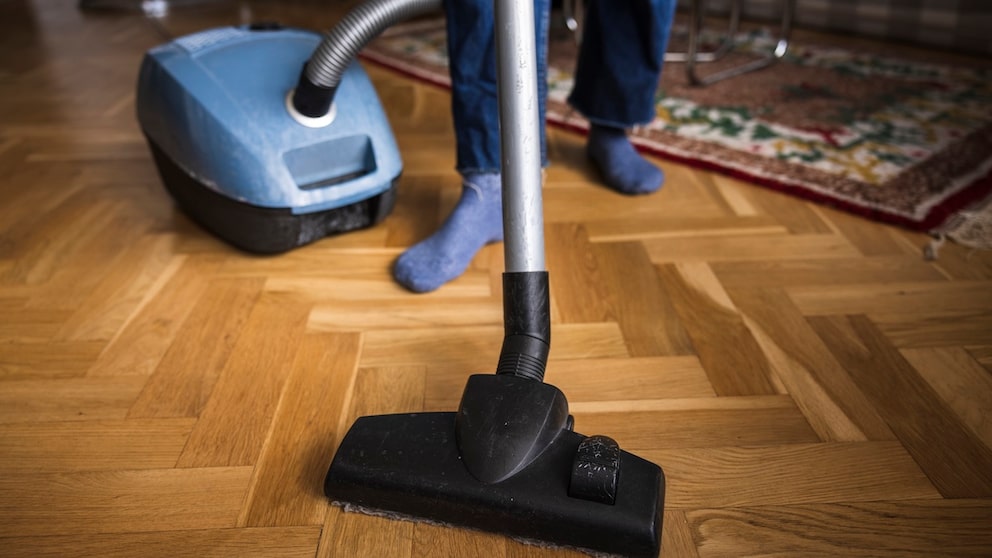May 6, 2025, 12:20 pm | Read time: 4 minutes
In the list of least favorite household chores, vacuuming comes right after ironing, cleaning the toilet and windows, and tidying up the apartment. If people could skip it, many likely would. However, that would lead to unpleasant consequences. myHOMEBOOK took a closer look at this and spoke with an expert about the “proper” way to vacuum.
In the short term, skipping vacuuming affects living quality. In the medium to long term, it impacts health. It takes only a few weeks for this to happen. Find out what occurs and how to do it right in this article.
Phase 1: First Crumbs, First Guests
Within a few days, visible crumbs, dust bunnies, or hair accumulate on the floor if vacuuming is skipped. Households with children or pets produce a lot of dust and dirt in a short time. Food scraps or other organic materials attract the first insects, such as ants or fruit flies. A fine layer of dust forms, especially under or on furniture.
Phase 2: Thick Dust Layers and Poor Air Quality
After about 14 days, a fine dust film turns into dense household dust. It contains textile fibers, skin flakes, hair, pollen, and microplastics. Visible dirt now settles on carpets, upholstery, and rugs. Air quality deteriorates, especially in small or poorly ventilated rooms.
People with sensitive airways notice it first: runny noses, watery eyes, and scratchy throats. Asthmatics or allergy sufferers react sensitively and suffer from the situation.
Phase 3: Mites, Mold, Odor
After about a month, the large amounts of dust attract more moisture. The combination of lack of cleaning and increasing humidity creates an ideal breeding ground for dust mites. Their numbers grow, especially under furniture or in the corners of the room.
First, mold spots may appear initially in damp areas like bathrooms or kitchens. An unpleasant odor spreads throughout the home. It smells musty. Textiles in the rooms, such as curtains or sofa cushions, absorb the odors.
Phase 4: Hygiene Problem with Health Risks
After several months without vacuuming, a hygiene issue arises alongside the aesthetic problem. Bacteria and mold spores find ideal living conditions in the vast amounts of dust. The risk of respiratory issues, allergic reactions, or skin problems increases, especially for children and older people with pre-existing conditions. Smaller insects like silverfish or dust lice can spread throughout the living area. In extreme cases, moths or even pests like cockroaches may follow.
How Often Should You Vacuum?
The answer to such a question is usually: It depends. myHOMEBOOK spoke with Elke Messerschmidt from the Competence Center for Home Economics. “The frequency of vacuuming depends on several factors, such as individual dirt perception, movement within the home, the number and age of household members, whether pets live in the household, if there are dirt mats at the entrance, and whether it is a single-family or multi-family home.”
From this, at least a few vacuuming rules can be derived. “In a household with two working people, vacuuming once a week is sufficient. For families with young children, vacuuming should be done daily in the living and dining areas. The same applies to dog owners during shedding season,” advises the expert to myHOMEBOOK.

This Is What Happens When You Stop Cleaning Your Home

How often you should clean in a single household

For who is a 3-in-1 vacuum cleaner worthwhile?
How Effective Are Vacuum Robots?
In many homes, they now roam almost continuously over the floor, searching for hidden dust: vacuum robots. Can they keep up with regular handheld vacuums in terms of dirt removal?
“According to Stiftung Warentest, vacuum robots now achieve good cleaning results,” reports Elke Messerschmidt. “However, with some devices, corners need to be cleaned regularly.” Generally, floor cleaning with a vacuum robot takes a bit longer than with a handheld vacuum due to lower power.
“For allergy sufferers or asthmatics, vacuum-mop robots are beneficial,” recommends the expert. “They regularly remove dust from smooth floor coverings and better capture it through simultaneous mopping. This helps prevent dust and allergens from being stirred up.”

